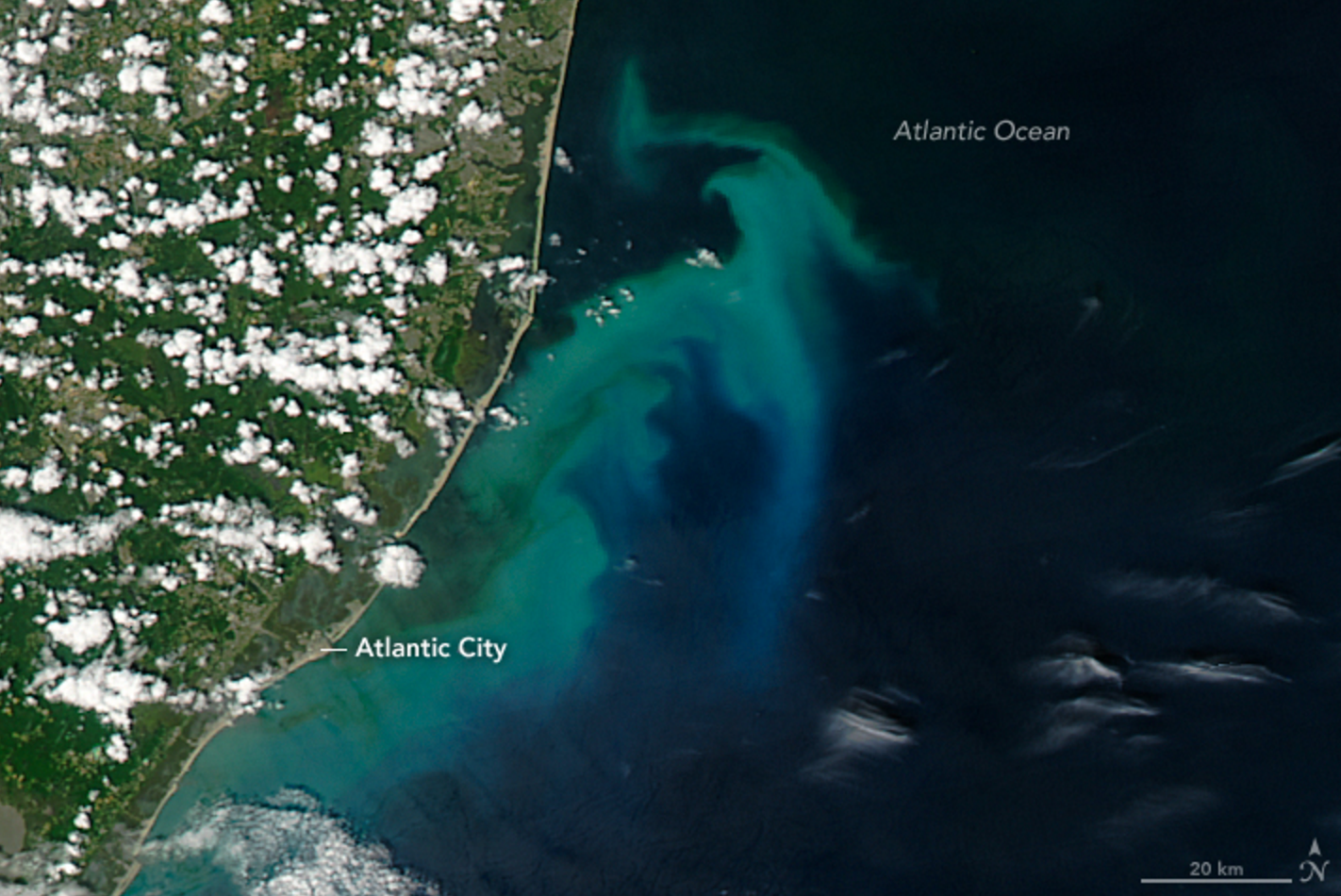NASA satellite captures large phytoplankton bloom off the Jersey Shore

NASA image.
A National Aeronautics and Space Administration (NASA) satellite recently captured an image of a phytoplankton bloom off the Jersey Shore.
The Moderate Resolution Imaging Spectroradiometer (MODIS) on NASA’s Aquasatellite acquired the above natural-color image of the bloom on July 6.
“Given adequate sunlight and nutrients, phytoplankton populations can explode into blooms large enough to be visible from space,” a NASA release states.
According to the release, nutrients to fuel a boom can be carried offshore from inland sources — like what recently happened in Florida– but blooms locally can also occur with upwelling, which occurs when winds blow surface waters away from the coast resulting in cooler, often nutrient-rich water rising to the surface.
Oscar Schofield, a marine scientist at Rutgers University, said the wind-driven upwelling is reflected in relatively cold water temperatures off the Jersey Shore.
“These upwellings occur every summer and fuel large phytoplankton blooms,” he said. “Studies have suggested these summer upwelling events occur several times each summer and lead to large blooms that can discolor the water.”
The release states that while the blooms are “often harmless” and “are an important food source for marine life,” they can sometimes be harmful by depleting the water’s oxygen and producing toxins.
WHYY is your source for fact-based, in-depth journalism and information. As a nonprofit organization, we rely on financial support from readers like you. Please give today.

